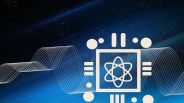
Earlier this week, SpaceX successfully completed a static fire test of its Crew Dragon spacecraft's launch escape system. This major milestone may indicate that SpaceX and its Crew Dragon are moving closer to their goal of bringing NASA astronauts to the International Space Station next year.
"Full duration static fire test of Crew Dragon's launch escape system complete - SpaceX and NASA teams are now reviewing test data and working toward an in-flight demonstration of Crew Dragon's launch escape capabilities," says the SpaceX tweet celebrating the success.
Crew Dragon Success Brings SpaceX Back on Track
This is the same static fire test that ended in a catastrophic explosion when what NASA and SpaceX officials later identified to be a propellant leak. The propellant leak in the check valve caused a "slug" of liquid oxidizer through the check valve leading to the explosion. The incident delayed plans for the two-week crewed test missions scheduled for July, but this latest success hopefully sets the Dragon back on track.
An update from NASA in a blog posting provides further details on the tests:
The engine tests, conducted near SpaceX's Landing Zone 1 on Cape Canaveral Air Force Station in Florida, began with two burns for a duration of one-second each for two of Crew Dragon's 16 Draco thrusters.
These Draco thrusters are used for on-orbit maneuvering and attitude control, and would also be used for re-orientation during certain in-flight launch escapes. Following these initial Draco thruster burns, the team completed a full-duration firing for approximately nine seconds of Crew Dragon's eight SuperDraco engines. The SuperDraco engines are designed to accelerate Dragon away from the F9 launch vehicle in the event of an emergency after liftoff.
In quick succession, immediately after the SuperDracos shut down, two Dracos thrusters fired, and all eight SuperDraco flaps closed, mimicking the sequence required to reorient the spacecraft in-flight to a parachute deploy attitude and close the flaps before reentry. The full sequence, from SuperDraco startup to flap closure, spanned approximately 70 seconds.
Crew Dragon Timeline
The Crew Dragon has been making waves since 2015 with successful milestones one after another. SpaceX has been rigorously testing the Crew Dragon's flight and safety systems. The company has also demonstrated the Crew Dragon's capabilities in its inaugural flight earlier in March where it reached the ISS and returned in an unusual ocean touchdown off the coast of Florida.
However, the April incident during the cargo test set back the plans for manned tests that should have occurred in July. Hopefully, this week's success means that SpaceX and NASA are ready to continue with manned test flights as soon as early next year.
Boeing CST-100 Starliner
Boeing's CST-100 Starliner and SpaceX' Crew Dragon were awarded a lucrative combined $6.8 billion to serve as space taxis for NASA astronauts to the ISS. While plans of a 2017 manned mission have been greatly delayed, Boeing has also successfully concluded tests on the Starliner's launch abort system, despite a hiccup in which one of the three parachutes failed to open.
Boeing also expects to launch its first manned demonstrations early next year.
ⓒ 2025 TECHTIMES.com All rights reserved. Do not reproduce without permission.




